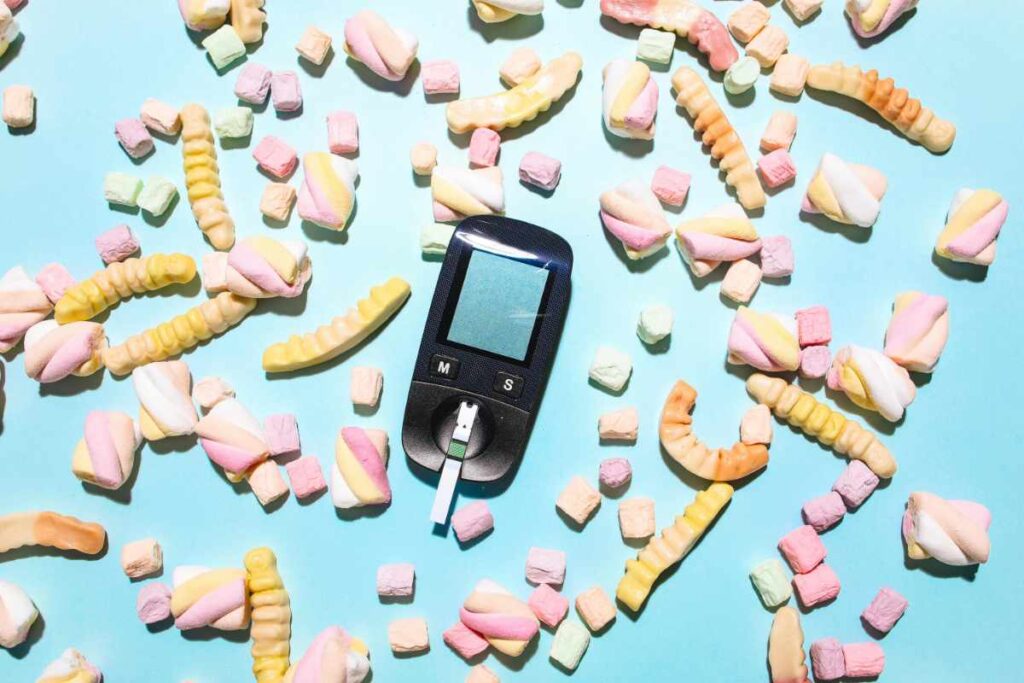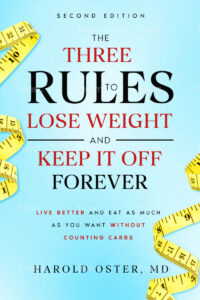Are Sugar Alcohols Unhealthy?

Are Sugar Alcohols Unhealthy?
Sugar alcohols are carbohydrates. They are used in low-calorie products because they are sweet but have far fewer calories than sugar. Sugar has four calories per gram, while sugar alcohols have about a quarter of a calorie per gram. They taste similar to sugar and are used in mints, sugar-free gum, and many diet foods. In fact, I couldn’t find a single sugar-free mint or sugar-free gum that doesn’t contain a sugar alcohol. The most common are erythritol, xylitol, maltitol, and sorbitol. Sugar alcohols are rarely found in diet sodas.
Erythritol and sorbitol are natural, but that doesn’t mean they are necessarily good for you. I have a blog post on this issue. Remember, tobacco and cyanide are natural. You can also find erythritol as the first ingredient in some of the sweetener packets at restaurants, which is why I recommend pure stevia powder.
Several years ago, reports came out that erythritol may be harmful. People with higher levels of erythritol in their blood had an increased risk of heart attack and stroke. I dismissed these studies because eating a lot of sugar can increase your erythritol level in the blood. Eating a lot of sugar is harmful, which might explain the apparent harm of consuming erythritol.
Now I feel otherwise. I believe that erythritol and the other sugar alcohols are unhealthy. I believe they increase the risk of heart attack and stroke, and I avoid them if possible. Multiple studies show that erythritol, maltitol, sorbitol, and xylitol increase the risk of vascular disease. The mechanism is known. Sugar alcohols increase the action of platelets, making blood more likely to clot. Platelet aggregation is what triggers most heart attacks and strokes. Here are some studies: all sugar alcohols, erythritol, and xylitol.
I have said that everything has a risk. Even too much water can be dangerous. I recommend weighing the risks and benefits and choosing with intent. Sugar alcohols allow you to eat low-sugar foods that taste good. For the holidays, my sister-in-law makes wonderful sugar-free desserts with Lily’s milk chocolate. Click on the nutrition. There are 21 grams of erythritol in a bar. It is up to you to decide whether the benefits outweigh the risks. My wife makes sugar-free chocolate strawberries with stevia, my preferred sweetener, so it is not an issue.
I don’t believe that we need to avoid sugar alcohols like the plague. I’m not sure they should be banned, though they are likely more harmful than some of the food dyes being banned. (I would get rid of food dyes until we know they don’t contribute to autism, ADHD, or mental illness.) We cannot ban anything with any risk, or we would have nothing to eat.
Since sugar alcohols in food are easy to avoid, I do that. I can live without sugar-free brownies and muffins. Mints and gum are great for freshening breath. A single mint or piece of gum has only a few grams of xylitol, but some people go through several a day. You can avoid them by brushing your teeth or rinsing with mouthwash, but that can be difficult at work. Many breath sprays (Binaca, Listerine) do not contain sugar alcohols. Listerine breath strips also do not contain sugar alcohols.
Sugar alcohols seem to increase the risk of heart attacks and strokes. Since the best reason to avoid added sugar is to improve health, I avoid sugar alcohols. Some can also cause gastrointestinal symptoms such as diarrhea—another reason to avoid them. Until more data clarifies the issue, I will stick with stevia when I want a non-nutritive sweetener.
 The Second Edition of The Three Rules to Lose Weight and Keep It Off Forever is available on
The Second Edition of The Three Rules to Lose Weight and Keep It Off Forever is available on 